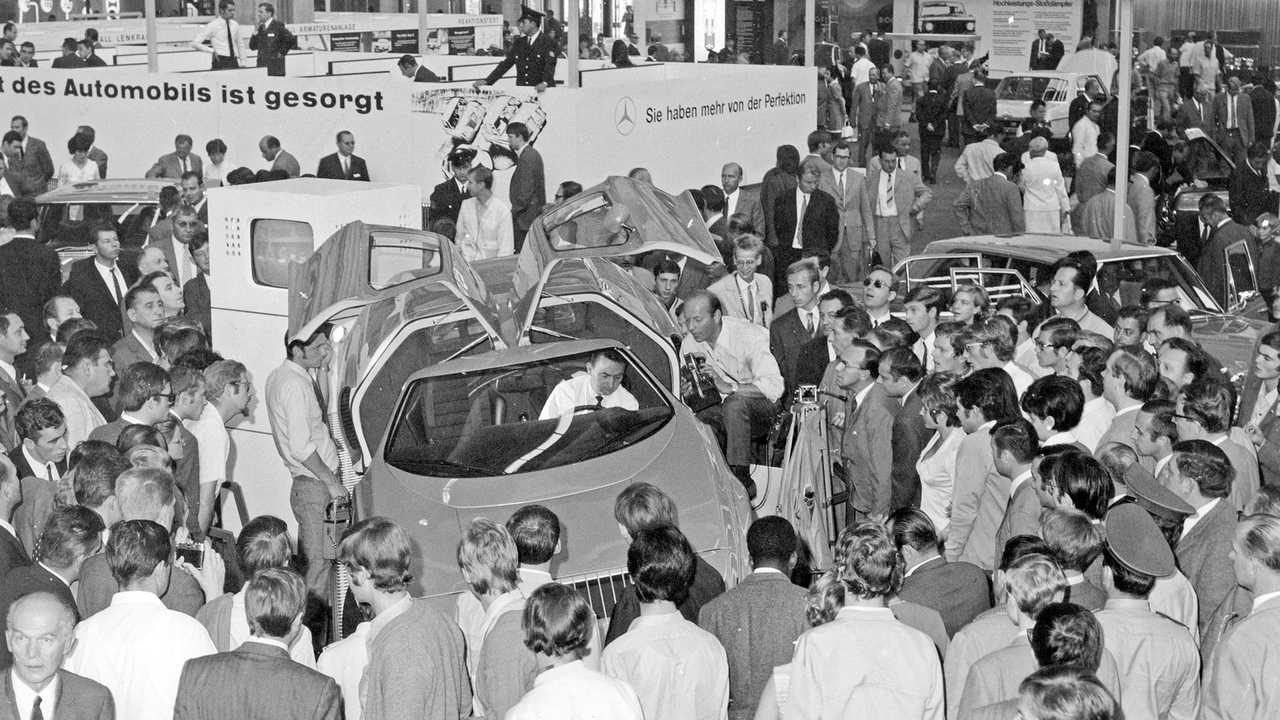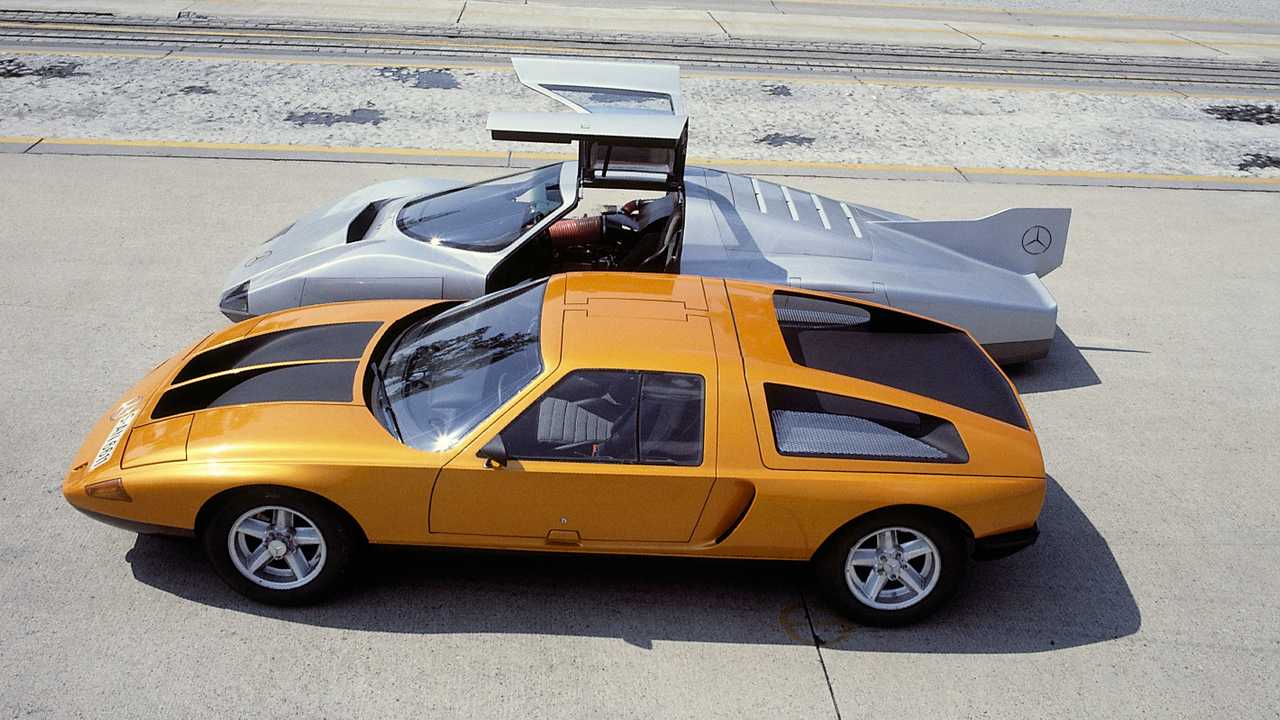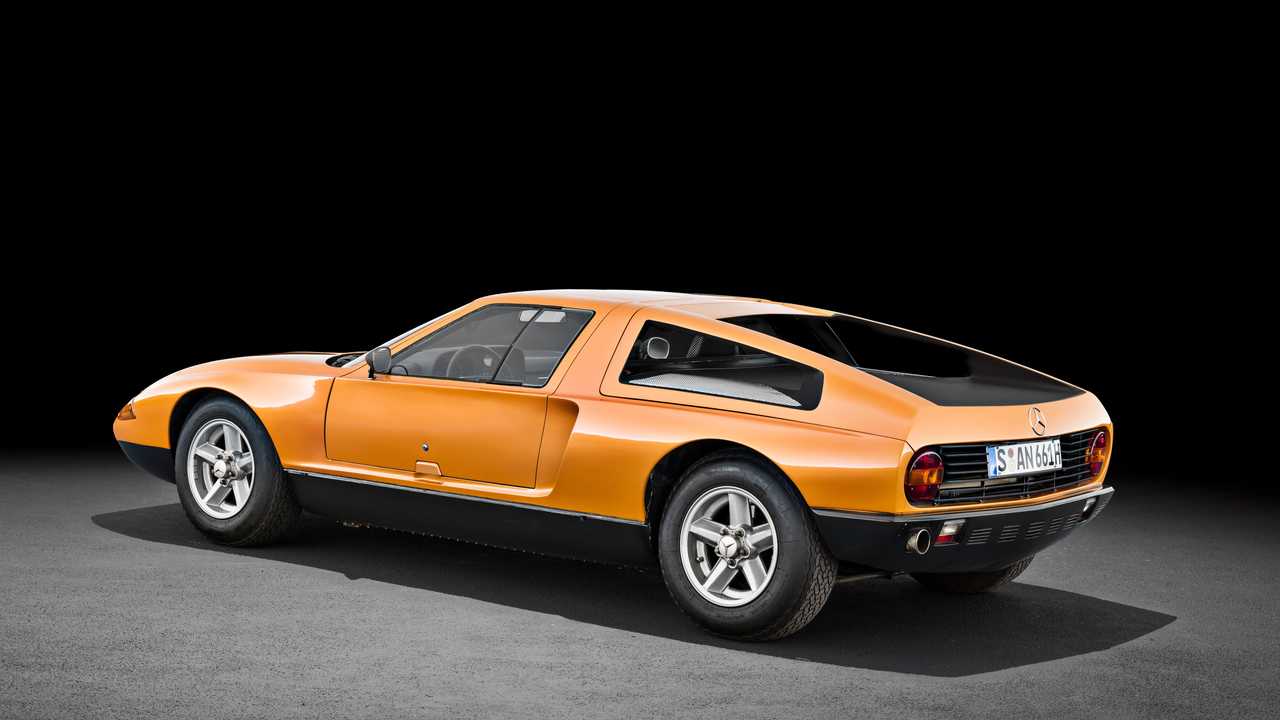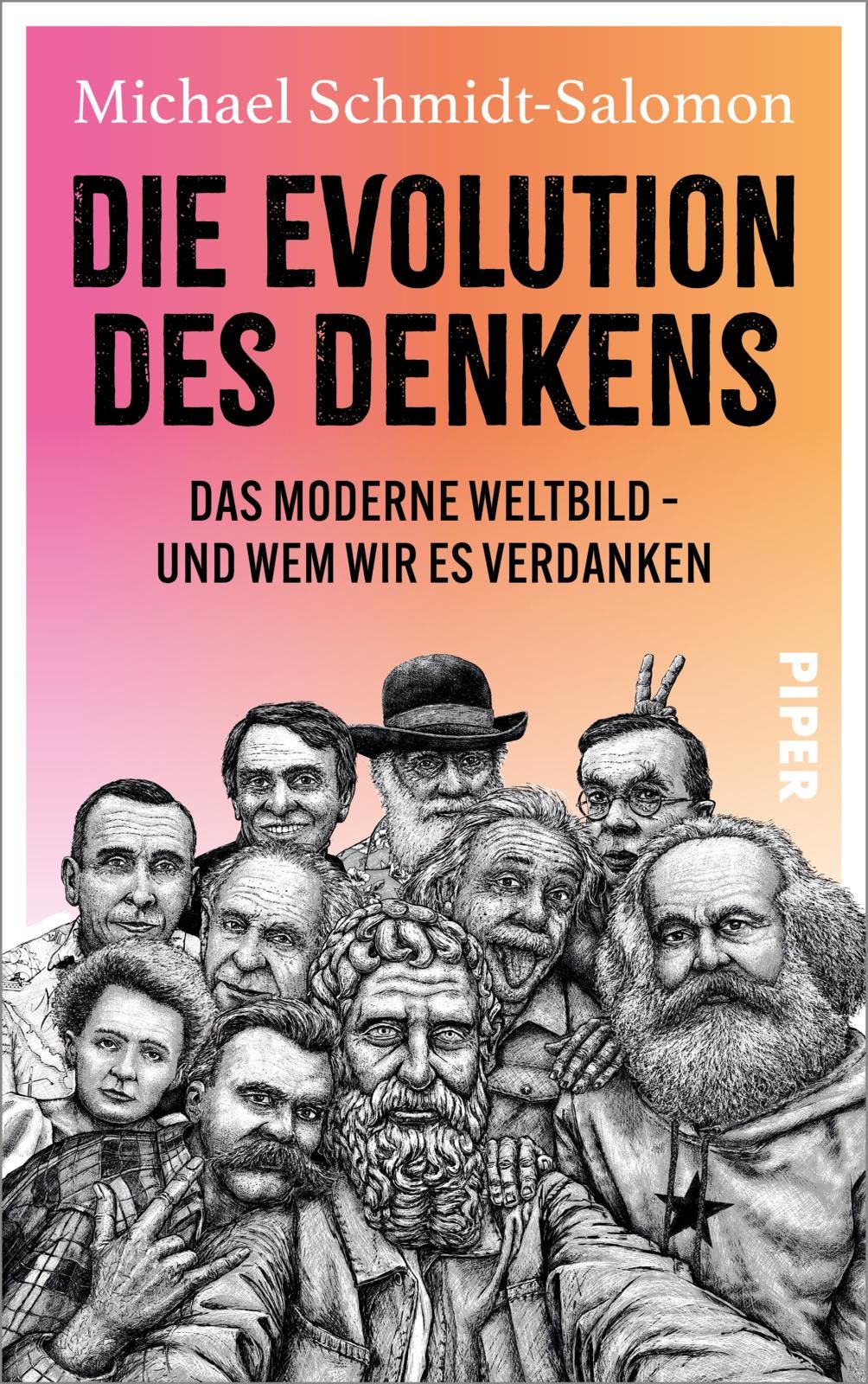Perhaps the most famous spinner after the NSU Ro 80 and the Mazda RX-7. And although it never went into serial production: the Mercedes C 111. In a compact form, the impressive wedge filled countless children’s rooms. But unlike its popular 300 SL Gullwing, there has been almost no books written about the C 111 yet.
So far: Three knowledgeable authors highlight the history of the C 111, as well as Daimler-Benz’s Wankel engine, in over 400 pages. Even Mercedes’ fluctuating past was known only to intimate connoisseurs of the subject. 15 Years and Nearly 100 Million DM Investments: Between 1961 and 1976, Daimler-Benz handled the rotary piston engine. Now we finally found out that the star-studded global company had to struggle with the shortcomings of the rotary piston engine.
Mercedes C 111 in all three versions with a rotary engine
More than 50 years after its first presentation, the Mercedes-Benz C 111 still impresses with its unique history. Authors Wolfgang Kalbhenn, Gerhard Heidbrink and Joachim Hack tell this story between technological vision and aesthetic charm in their book “Mercedes-Benz C 111 – Fackelträger, Traumportwagen und Rekordjäger”, to be published October 27, 2021 by Stuttgart Motorbuch Verlag (ISBN: 978). -3-613-04137-0)
The book is available in German. The volume, whose creation was comprehensively supported by Mercedes-Benz Classic, contains 432 pages with 940 illustrations and costs €69.
At the 1969 International Auto Show (IAA), the Mercedes-Benz C 111 was presented to the public for the first time. The concept car opens new horizons, including a rotary engine, futuristic design and the use of innovative materials. The C 111 (carried internally under the C 101 Series designation) has become a symbol of the Mercedes-Benz brand’s pioneering spirit and employees’ will to progress.

Mercedes-Benz C 111 at IAA 1969
The audience was very excited – the new book, for example, captures the history of blank checks that wealthy sports car fans sent to Mercedes-Benz.
The C 111’s biography begins prior to its trade show premiere in 1969. After initial considerations about a new high-performance sports car as the successor to the 300 SL (W 198) in the 1950s, the development that led directly to the C 111 began in the mid-1960s, the first sports car with A mid-engine designed by Mercedes-Benz. In their book, the authors shed light on this complex prehistory, including the acclaimed history of the Wankel engine, which was later considered a promising automobile engine.
After the introduction of the C 111 with a three-disc rotary engine in 1969, the C 111-II with a four-cylinder rotary engine and an upgraded design was presented at the 1970 Geneva Motor Show. This version of the concept car arouses even greater desires among sports car enthusiasts. But after long and contentious discussions within the company, production of the C 111 series never began, although the development of a completely new variant with a plastic floor pan continued.

The book describes all this with all its background – as well as the following story, which began in 1975: the development of a whole family of successful, record-breaking cars. These include the C111-II D from 1976, the C 111-III from 1977/78 (both with a five-cylinder diesel engine) and finally the C 111-IV from 1979 with a turbocharged V8 petrol engine. As another standard variant of the car, the C 111-V was developed in 1979/80, but was ultimately not completed.
In 2013 Mercedes-Benz Classic made the decision to make the C111-II ready to drive again. In order not to jeopardize the preservation of a few of the existing Wankel engines, the choice fell on the car that had already received a 3.5-liter V8 when it was commissioned at the end of 1970. In 2014, this car was shown for the second time at the “Silvretta Classic Rallye Montafon” “. This comeback is covered in the book as well as the Mercedes-Benz Museum’s large special exhibition on the subject of the C 111 in 2015.

Mercedes C 111-II V8 (1970)
Passionate discussions about the design, the far-sighted use of the new digital processes of the car’s development and much more: Historic archive sources and contemporary witnesses have given the authors particularly insight into the diverse aspects of the history of the C 111. The book takes advantage of this because it has not become a sobering documentation, but it does tell the story of the car using Exciting stories with many original quotes.
The impressive breadth and depth of the display is the result of extensive work since 2017. In particular, extensive research in the archives and in the Mercedes-Benz Classic car collection as well as extensive discussions with contemporary witnesses made the comprehensive display possible. The new standard work contains many previously unknown details.
About the authors: Wolfgang Kalbhenn, a former employee of the Mercedes-Benz engine testing department, invented the patented stepping intake manifold to improve the rotary engine in 1972 and came up with the idea for the book in 2017. It brings in Gerhard Heidebrink, who worked in the Mercedes-Benz archives A classic for many years, deep historical knowledge of relevant sources, facts and contexts as well as their appropriate preparation. Joachim Hack not only writes an introductory overview of the technical history of the rotary engine, but also accompanies the entire project as a professional editor.

“Explorer. Communicator. Music geek. Web buff. Social media nerd. Food fanatic.”






More Stories
The Game of Thrones actor was 74 years old
Stone Age humans once sought refuge in lava tube caves
Review of the book The Evolution of Thought